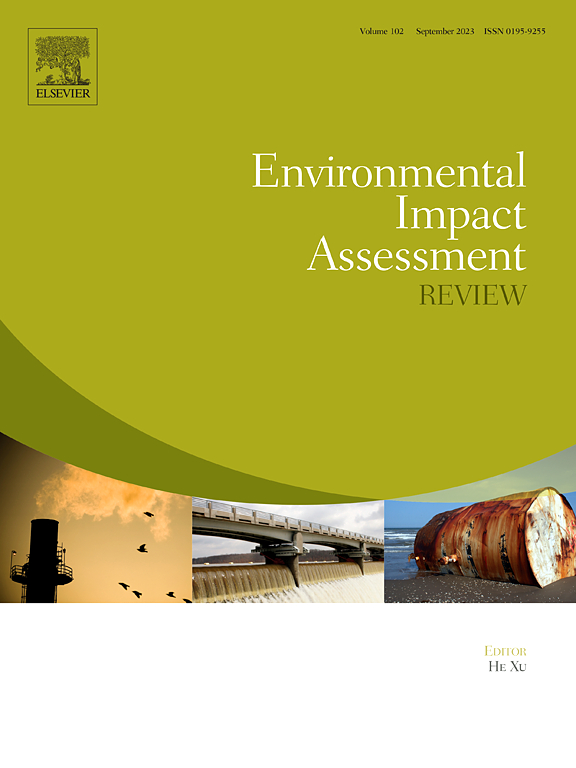为子孙后代保护湿地:南亚水-气候-社会关系的综合方法
IF 9.8
1区 社会学
Q1 ENVIRONMENTAL STUDIES
引用次数: 0
摘要
湿地是水-气候-社会(WCS)关系的重要组成部分,提供基本的水文功能,调节气候变率,并为数百万人提供支持。然而,不断增加的人为压力和气候变化威胁着它们的可持续性。本研究利用综合地理空间和统计方法,考察了南亚6个国家89个拉姆萨尔湿地的水资源供应、气候变率和社会依赖性之间的相互关系。该研究综合了高分辨率土地利用数据分析、ERA5气候再分析(1991-2020)温度和降水趋势,以及基于拉姆萨尔站点描述的生态系统服务和威胁的系统评估。通过分析气候趋势、土地利用模式(2020年)和人口动态(2020年),我们评估了气候驱动的湿地变化与人类压力之间的联系。结果表明:89.3%的湿地呈现升温趋势,降水趋势呈现空间变异性,影响湿地水文和生态系统稳定性;同时,超过79%的湿地提供了基本的供应和调节服务,但73%的湿地因生物资源的利用而面临退化,58.4%的湿地受到城市扩张的影响。人口分析显示了鲜明的对比,从人口稀少的湿地到支持250多万人口的城郊地区,水资源获取和湿地保护的资源冲突加剧。农田向湿地缓冲区的扩张进一步加剧了对水资源的竞争,破坏了生态完整性与人类需求之间的微妙平衡。该研究强调了气候引起的水分可利用率变化直接影响湿地生态系统的恢复力和社会福祉,强调了在WCS框架内进行综合湿地管理的必要性。我们建议采取气候适应政策、可持续土地利用法规和利益相关者驱动的保护举措,以增强湿地的复原力。本文章由计算机程序翻译,如有差异,请以英文原文为准。
Protecting wetlands for future generations: A comprehensive approach to the water-climate-society nexus in South Asia
Wetlands are vital components of the Water-Climate-Society (WCS) Nexus, providing essential hydrological functions, regulating climate variability, and supporting millions of people. However, increasing anthropogenic pressures and climate change threaten their sustainability. This study examines the interconnections between water availability, climate variability, and societal dependencies across 89 Ramsar wetlands in six South Asian countries using an integrated geospatial and statistical approach. The study integrated analysis of high-resolution land use data, ERA5 climate reanalysis (1991–2020) for temperature and precipitation trends, and systematic assessment of ecosystem services and threats based on Ramsar site descriptions. By analyzing climate trends, land-use patterns (2020), and population dynamics (2020), we assess the linkages between climate-driven wetland changes and human pressures. Results indicate that 89.3 % of wetlands exhibit rising temperatures, with precipitation trends showing spatial variability, affecting wetland hydrology and ecosystem stability. Simultaneously, over 79 % of wetlands provide essential provisioning and regulating services, yet 73 % face degradation from biological resource use, and 58.4 % are impacted by urban expansion. Population analysis reveals a striking contrast, from sparsely inhabited wetlands to peri-urban sites supporting over 2.5 million people, intensifying resource conflicts over water access and wetland conservation. The expansion of croplands into wetland buffer zones further exacerbates competition for water resources, disrupting the delicate balance between ecological integrity and human needs. This study highlights that climate-induced changes in water availability directly influence wetland ecosystem resilience and societal well-being, emphasizing the need for integrated wetland management within the WCS framework. We recommend climate-adaptive policies, sustainable land-use regulations, and stakeholder-driven conservation initiatives to enhance the resilience of wetlands.
求助全文
通过发布文献求助,成功后即可免费获取论文全文。
去求助
来源期刊

Environmental Impact Assessment Review
ENVIRONMENTAL STUDIES-
CiteScore
12.60
自引率
10.10%
发文量
200
审稿时长
33 days
期刊介绍:
Environmental Impact Assessment Review is an interdisciplinary journal that serves a global audience of practitioners, policymakers, and academics involved in assessing the environmental impact of policies, projects, processes, and products. The journal focuses on innovative theory and practice in environmental impact assessment (EIA). Papers are expected to present innovative ideas, be topical, and coherent. The journal emphasizes concepts, methods, techniques, approaches, and systems related to EIA theory and practice.
 求助内容:
求助内容: 应助结果提醒方式:
应助结果提醒方式:


